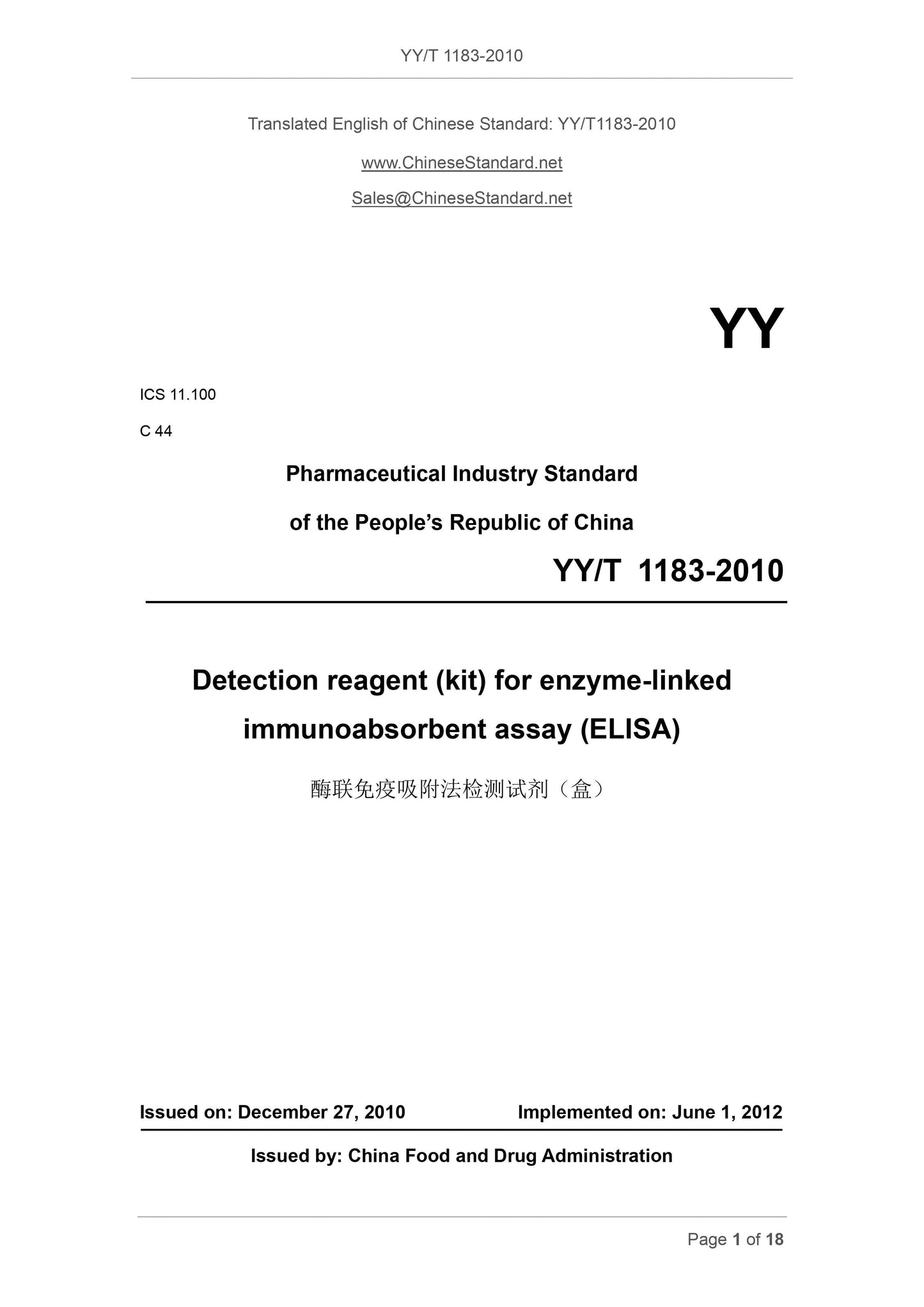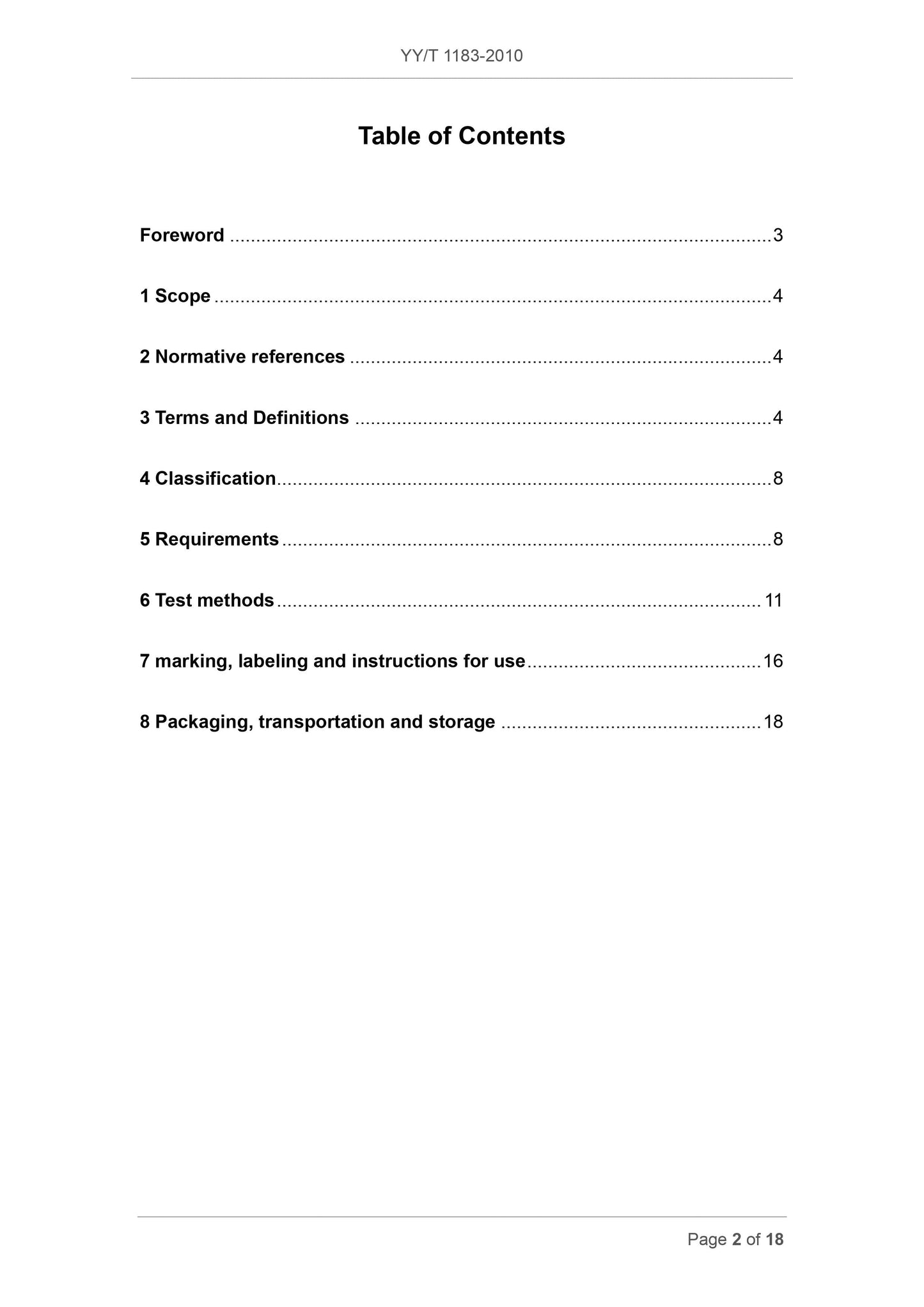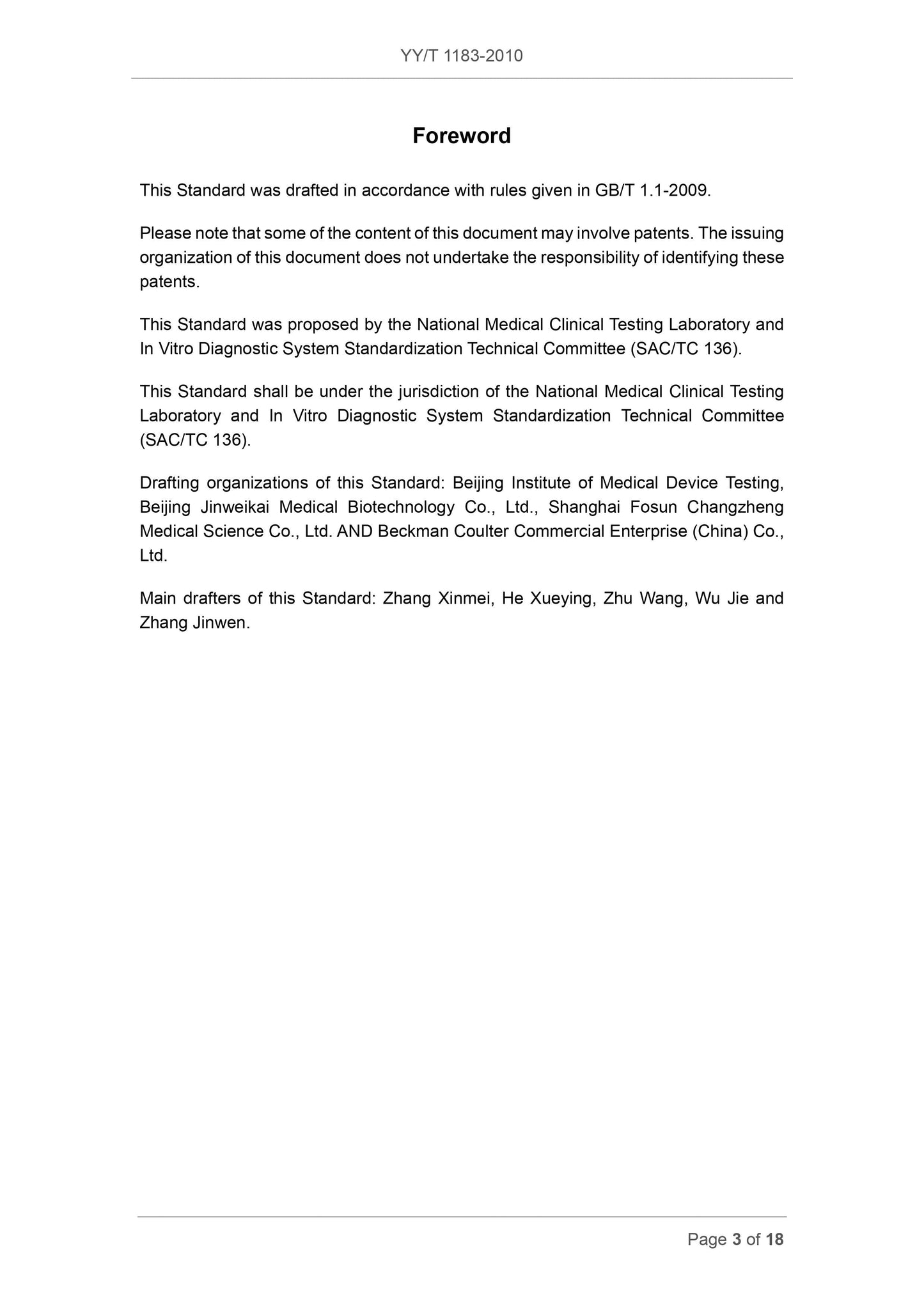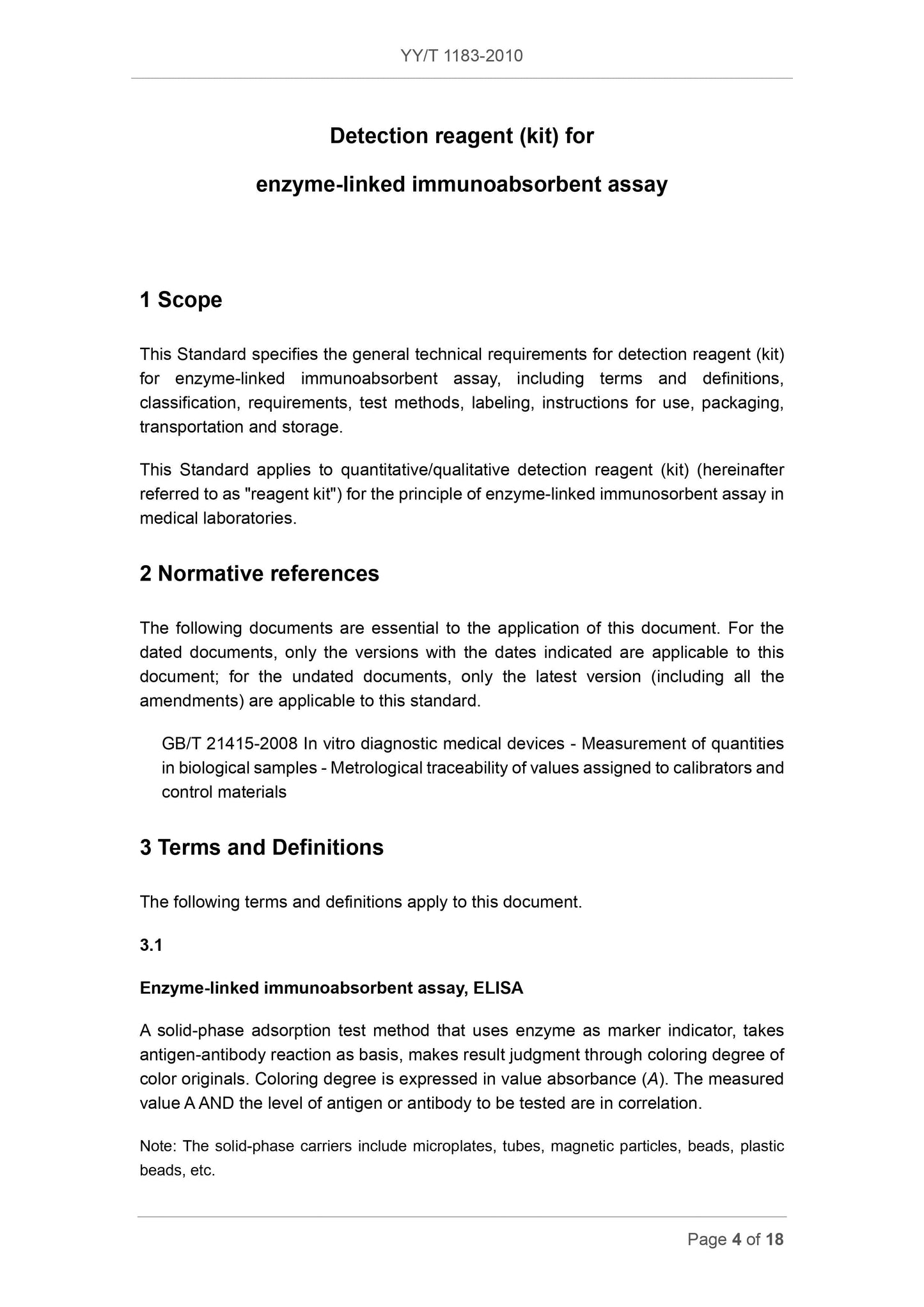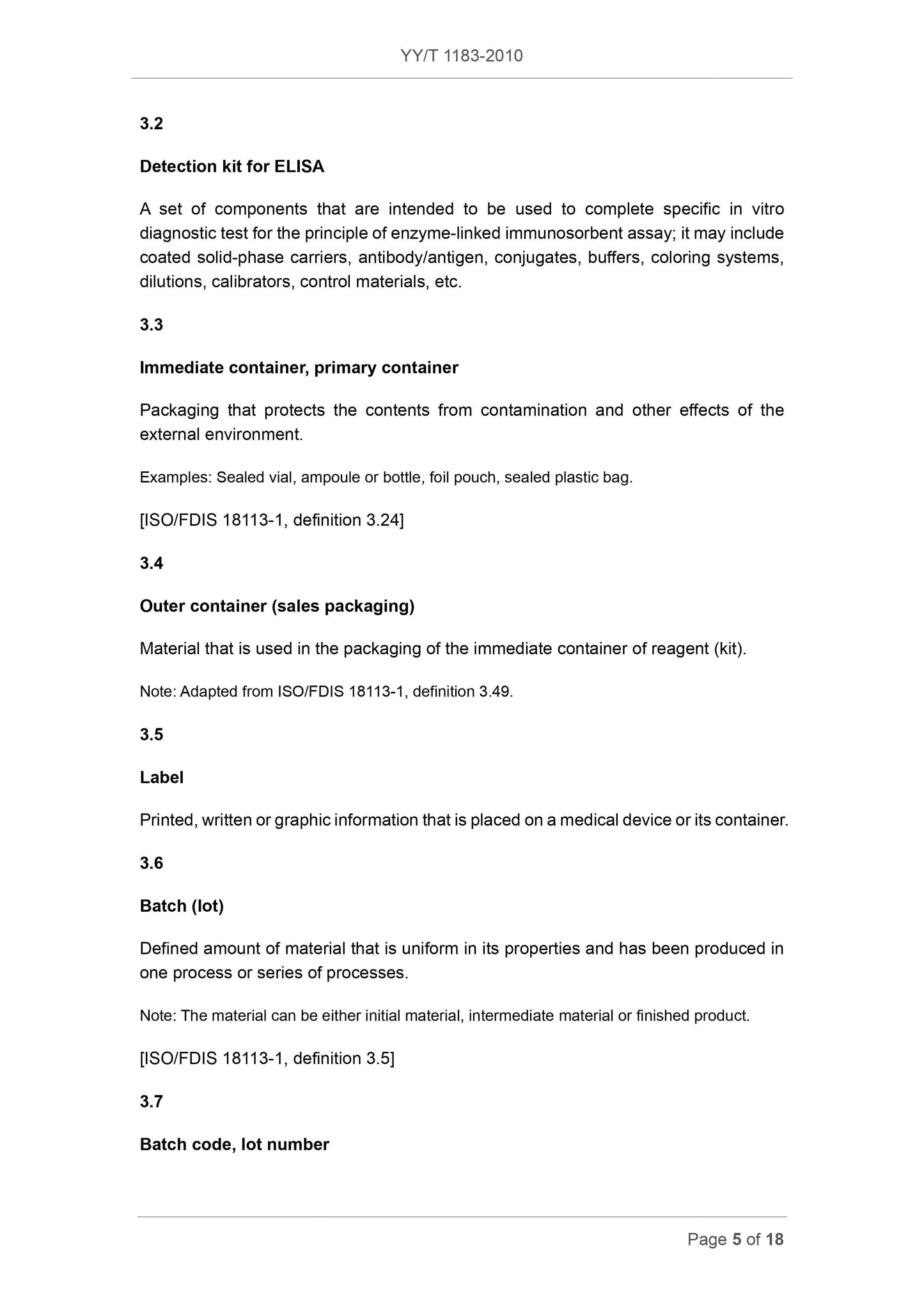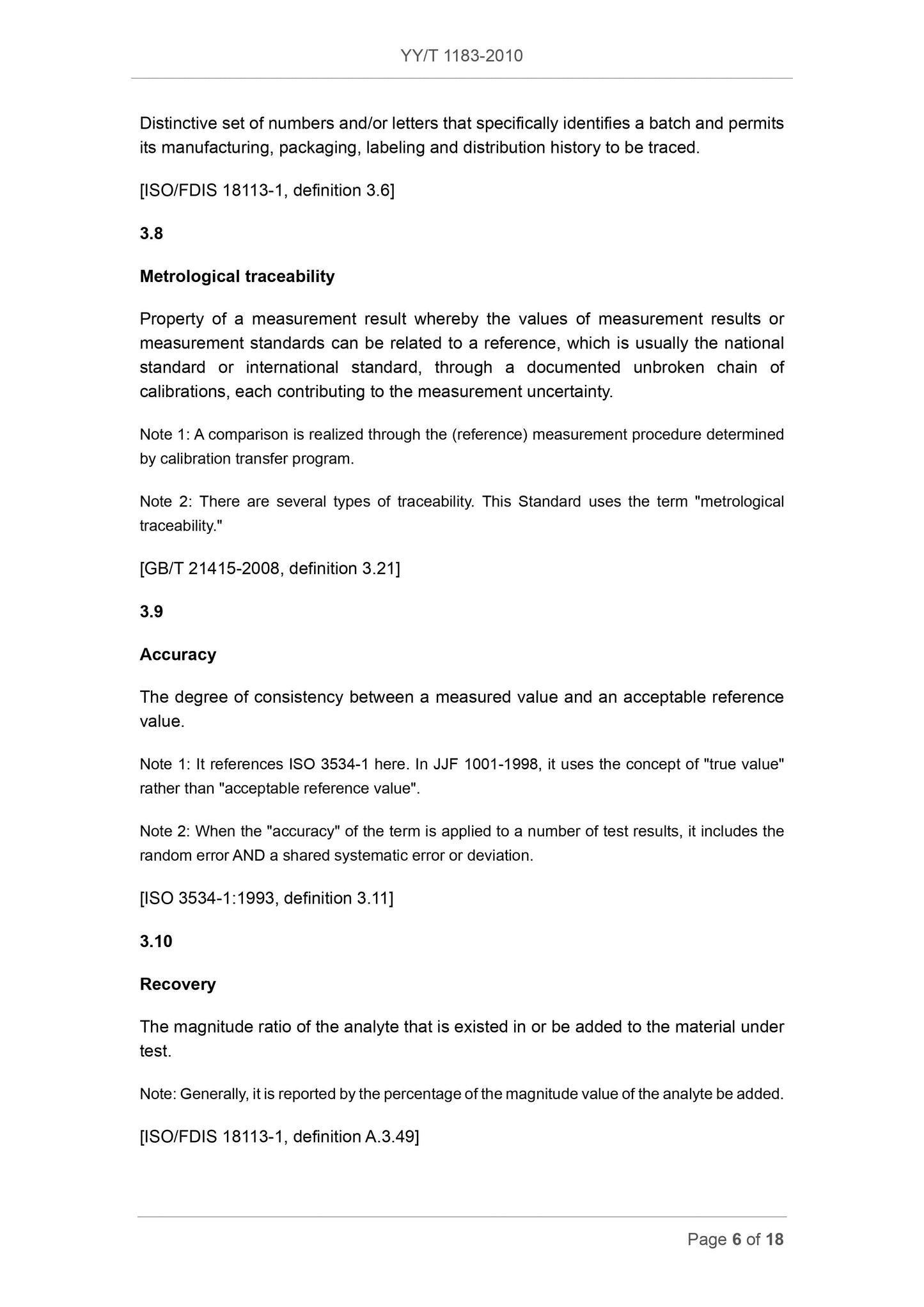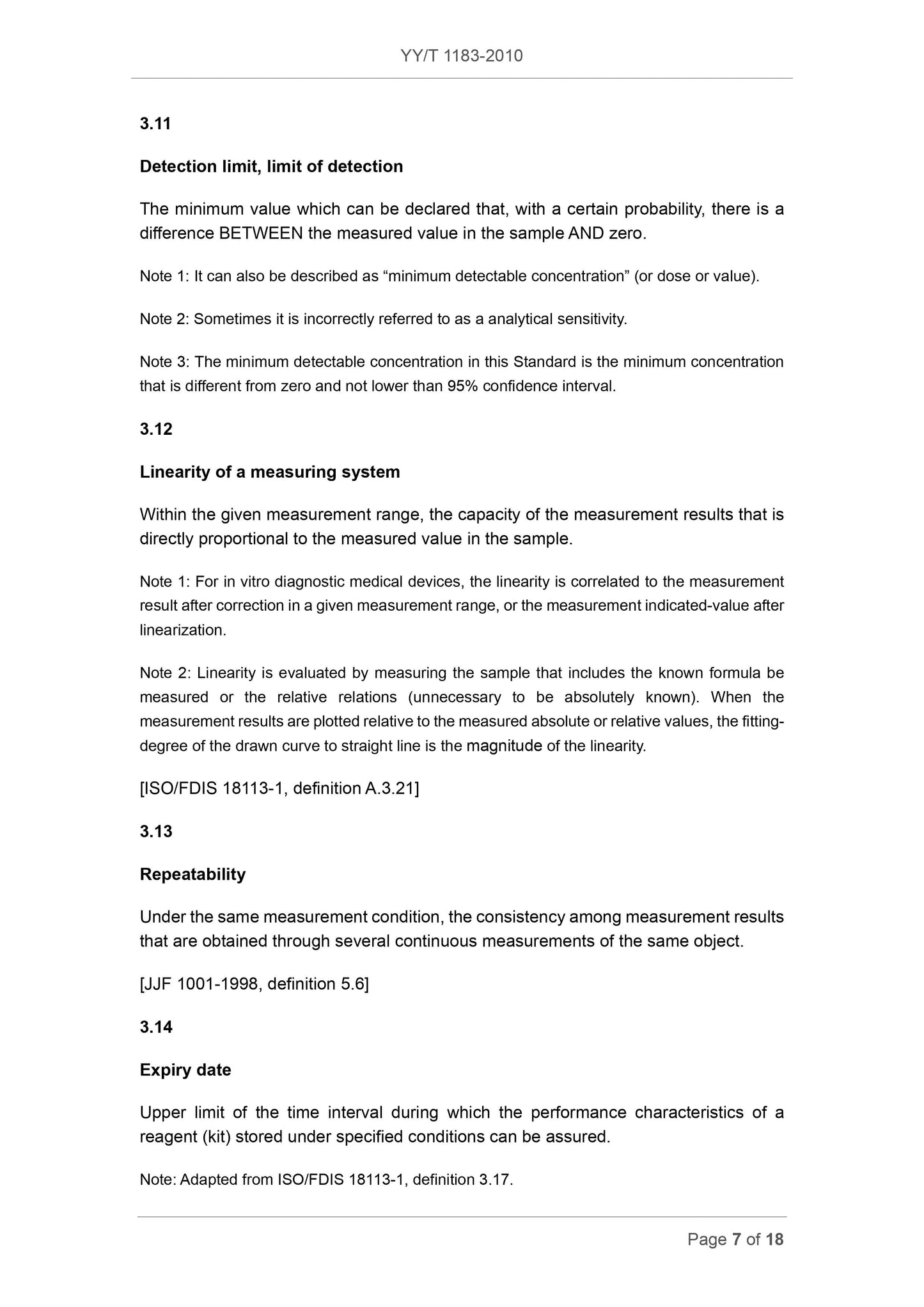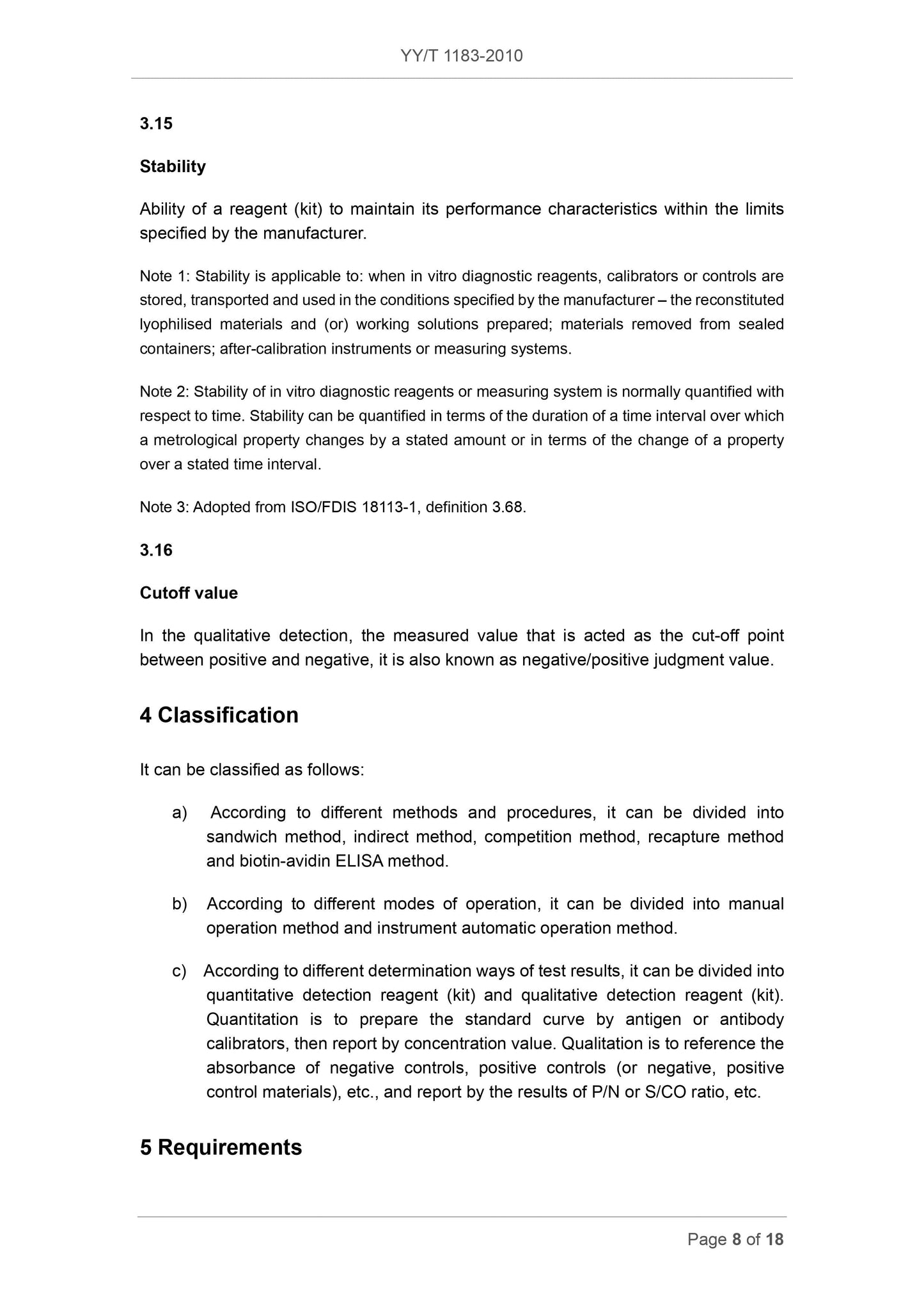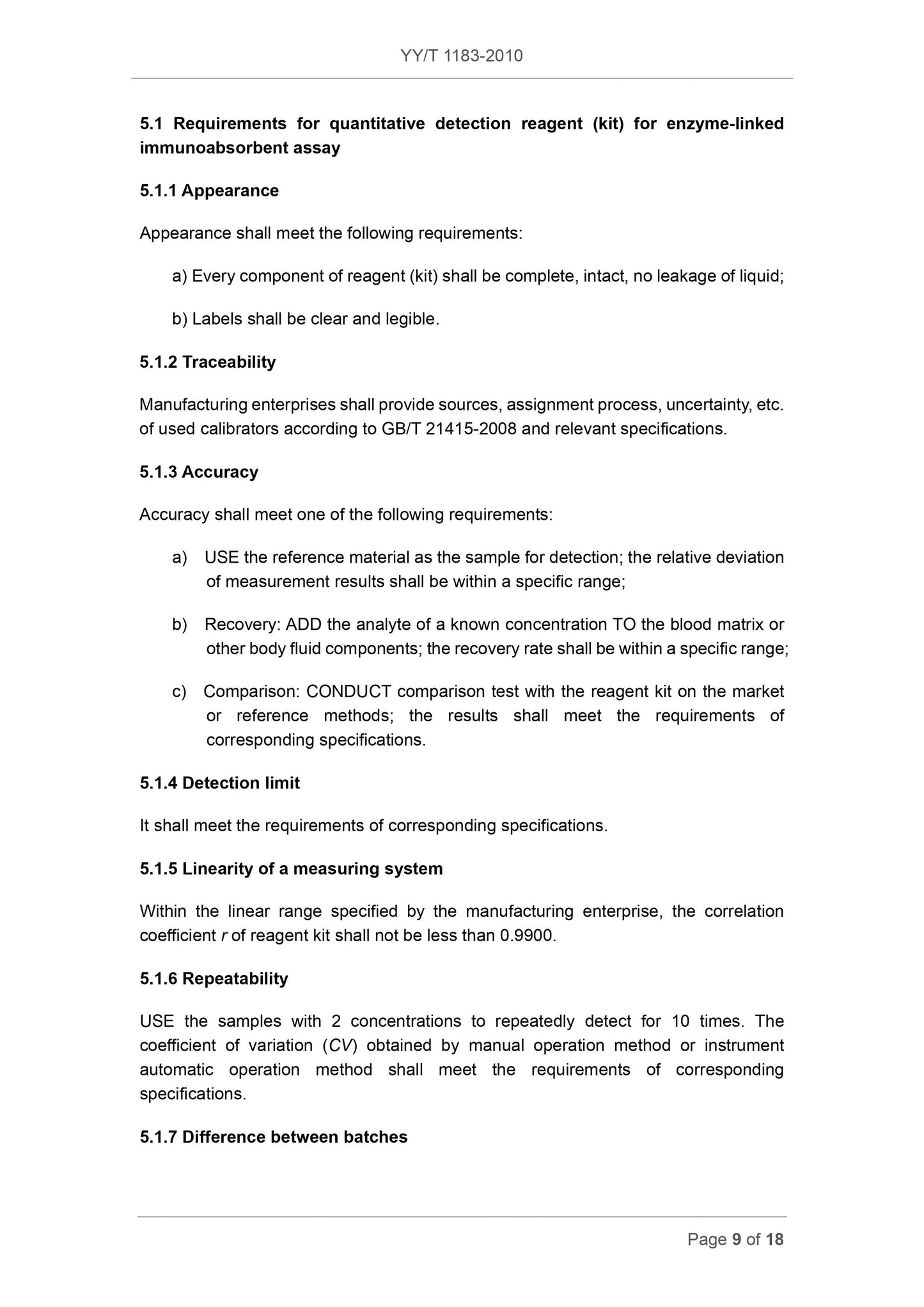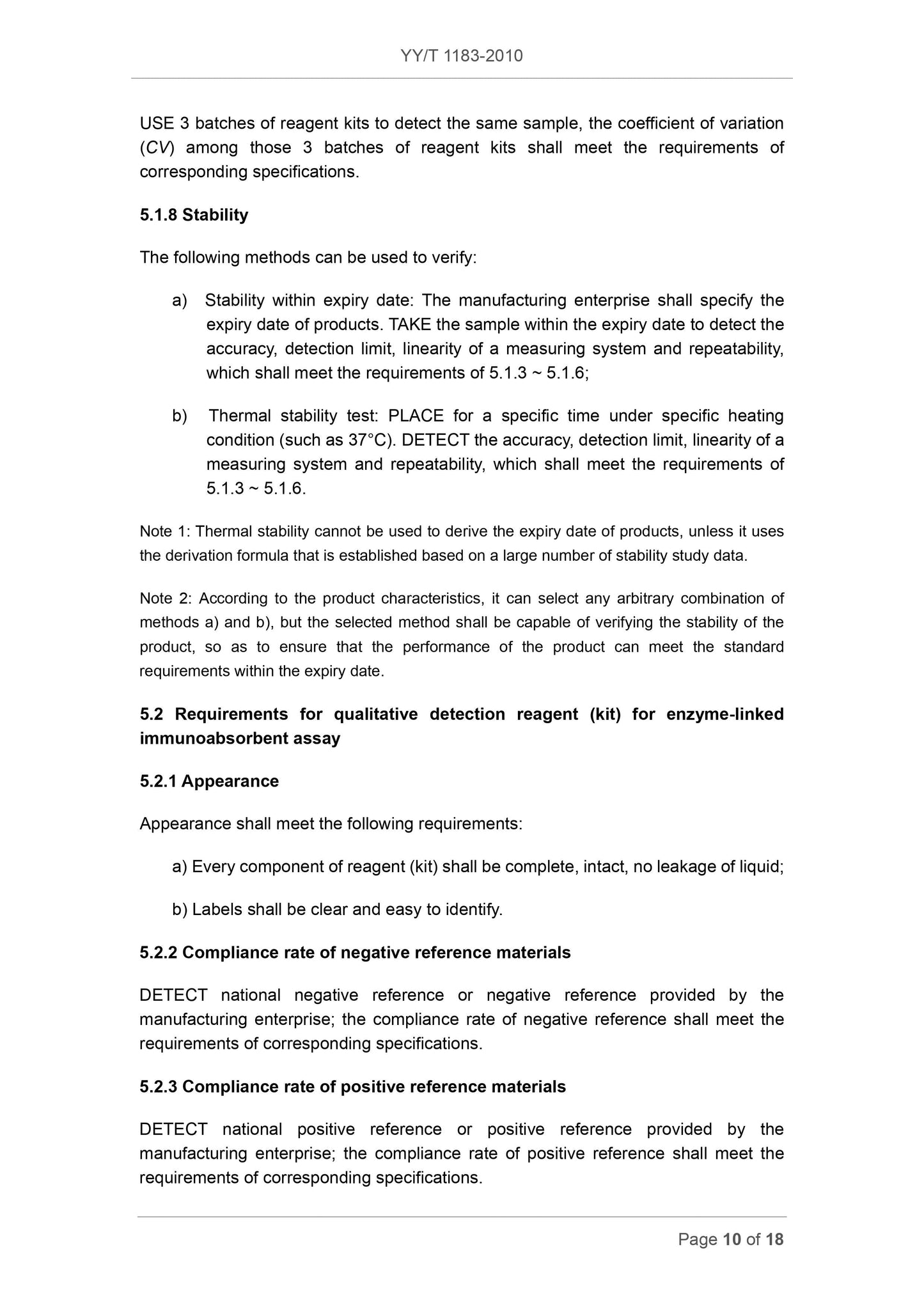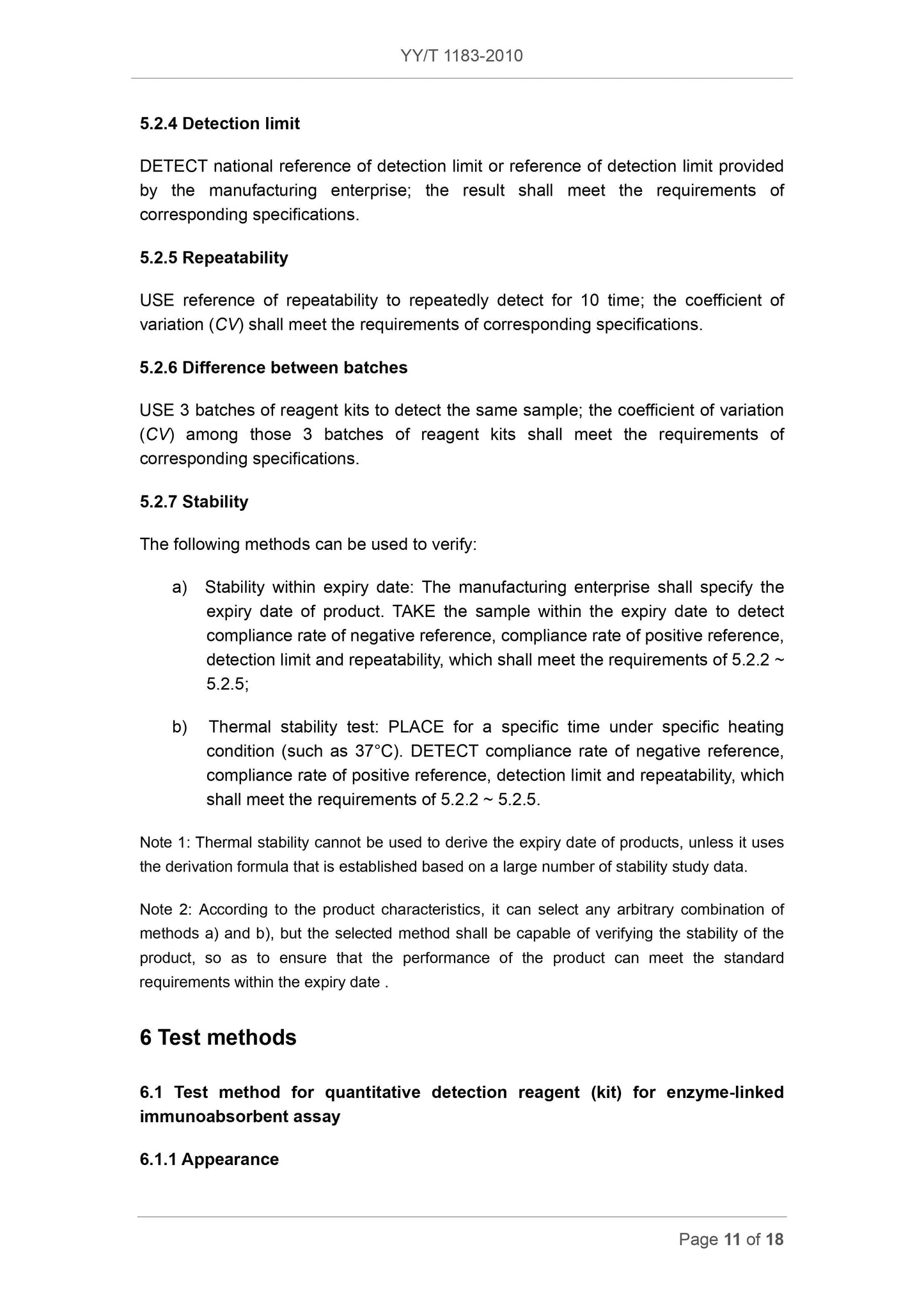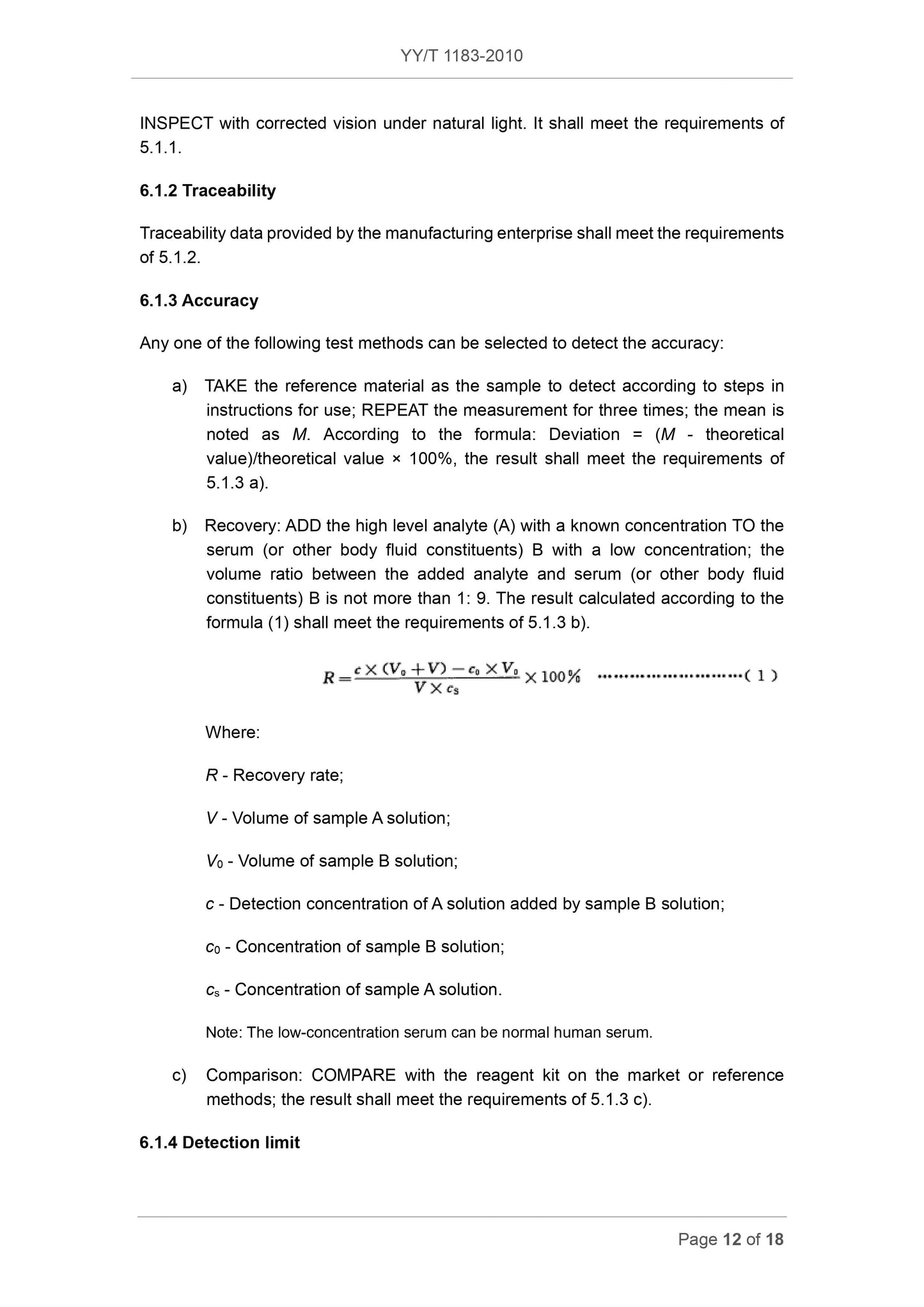1
/
of
12
www.ChineseStandard.us -- Field Test Asia Pte. Ltd.
YY/T 1183-2010 English PDF (YY/T1183-2010)
YY/T 1183-2010 English PDF (YY/T1183-2010)
Regular price
$150.00
Regular price
Sale price
$150.00
Unit price
/
per
Shipping calculated at checkout.
Couldn't load pickup availability
YY/T 1183-2010: Detection reagent (kit) for enzyme-linked immunoabsorbent assay (ELISA)
Delivery: 9 seconds. Download (and Email) true-PDF + Invoice.Get Quotation: Click YY/T 1183-2010 (Self-service in 1-minute)
Newer / historical versions: YY/T 1183-2010
Preview True-PDF
Scope
This Standard specifies the general technical requirements for detection reagent (kit)for enzyme-linked immunoabsorbent assay, including terms and definitions,
classification, requirements, test methods, labeling, instructions for use, packaging,
transportation and storage.
This Standard applies to quantitative/qualitative detection reagent (kit) (hereinafter
referred to as "reagent kit") for the principle of enzyme-linked immunosorbent assay in
medical laboratories.
Basic Data
| Standard ID | YY/T 1183-2010 (YY/T1183-2010) |
| Description (Translated English) | Detection reagent (kit) for enzyme-linked immunoabsorbent assay (ELISA) |
| Sector / Industry | Medical Device and Pharmaceutical Industry Standard (Recommended) |
| Classification of Chinese Standard | C44 |
| Classification of International Standard | 11.100 |
| Word Count Estimation | 18,175 |
| Date of Issue | 2010-12-27 |
| Date of Implementation | 2012-06-01 |
| Quoted Standard | GB/T 21415-2008 |
| Regulation (derived from) | State Food and Drug Administration Notice 2010 No. 97 |
| Issuing agency(ies) | State Food and Drug Administration |
| Summary | This standard specifies the enzyme-linked immunosorbent assay reagent (box) the general technical requirements. Including terminology and definitions, classification, requirements, test methods, marking and instructions, packaging, transportation and storage. This standard applies to the medical laboratory ELISA test for the principle of quantitative/qualitative detection side reagent (box). |
Share
